Dear
Brother Giuseppe
Volpati, dear Domenico,
I have had the pleasure to read the extensive and
detailed extracts from “Una Ragazza
Americana a Tripoli” by the author Victoria Giraud and published both
in her
books and her blog. Actually I had the pleasure to ‘meet’ the author
herself whilst researching on internet for
stories
relating to Libya and more specifically to
the American Base of Wheelus Field of
Tripoli. I became enthralled with her vivid memories of life in Tripoli
in
those years. Victoria Giraud has helped me to enrich my memories and
because of
this I thought it useful to open a new folder and
with Larry Tesler’s classic ‘copy and
paste’ save her writings for my archives.
Looking at her sunny smile in the photo taken in those
wonderful 1950’s carries me back over the years.
The clothes that Victoria
Giraud is wearing, the style
unmistakably 1950’s, unleashed a river of memories for me when the
girls wore
tight waistbands and full skirts.

|
| Victoria
Giraud in the
fifties |
Our generation, that of the
last century, appreciate the testimonies and memories of people like
her who
lived in Tripoli during those happy and ‘effervescent’ years. We could
do with
a little of that enthusiasm today !
Thinking of this brings to mind a song written
by Claudio Mattone called ‘The Fifties’ and interpreted by the
great Gigi Proietti that goes something like this
‘ when you wore a large coat with a big collar, when the older kids
hung around
in front of the school hoping to get noticed, when you rode a Lambretta
or
Vespa wearing T shirts, goggles and scarves, when the whole family went
out on
Sunday for the day in their old car or new 600, when couples rushed to
the
movies to kiss and cuddle in the dark’
The 1950’s were the years we exchanged pens, nibs, ink
and blotting paper for Lazislao José Biro’s invention, the ball point
pen.
Baron Marcel Bich, an Italian born in Turin and naturalized French
bought the
patent from Biro in 1953 and from then it quickly spread across Europe
and
eventually to us in Tripoli. Thinking of
these pens reminds me that there were
also small cardboard packets containing six coloured Giotto crayons.
Printed on
the outside was an illustration of Giotti as a shepherd boy with his
flask by
his side, sketching a sheep on a rock. Cimabue is seen wearing a red
headdress
and observing with amazement the natural skill of this undernourished
child.
The story goes on to say Giotto was welcomed by both him, as later
Giorgio
Vasari did, into his Florentine workshop.
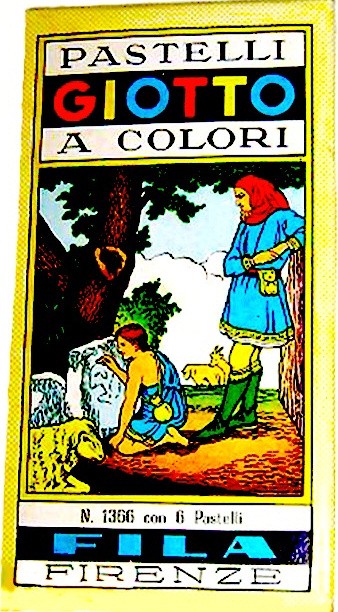
|
| Six colors of crayons
Giotto |
Dear friends, those were the years
of transition. World War II had ended a
few years before and people were starting to live again, both socially
and
economically. The new fashion in music reflected this change with the
swing and
the twist. The newer generations may look on it as prehistoric but it was the golden age of rock, the one and
only legendary music that still shakes the soul of its’ followers. Juke
boxes
appeared in cafés and bars and our homes were given facelifts,
repainted and
repaired.
These were the early years following the proclamation
of the ‘United Kingdom of Libya’ that then became the ‘Kingdom of
Libya’. In
1955 the young state became a member of the United Nations. I remember
the
great enthusiasm of the Libyan population and the celebrations that
accompanied
it on its first step on the road to
becoming an independent nation. Tripoli was a city in celebration. The
roads
were decked with flags and banners depicting their leader King Idris el
Awal
everywhere.

|
| King Idris El Awal |
Maidan Essavaia (Castle Square) and Maidan Algeria (Cathedral Square) were illuminated with
lights representing the Royal Crown.
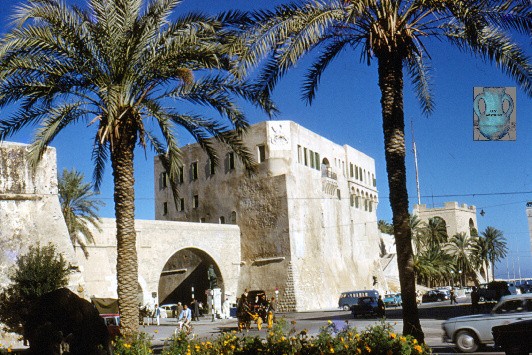
|

|
| Maidan Essaraia -
(Castle Square |
Maidan Algeria -
(Cathedral Square |
Victoria Giraud’s description of the Hotel Mehari with
its well known underpass where she stayed takes us back in time. Today
all that
remains of the Mehari with its guestrooms that opened onto six great
Arab
court-gardens is its name. It had been built in 1935 , together with
the Uaddan
Hotel by an architect , Florestano Di Fausto. Another architect , Gatti
Casazza
was responsibile for the interior design.
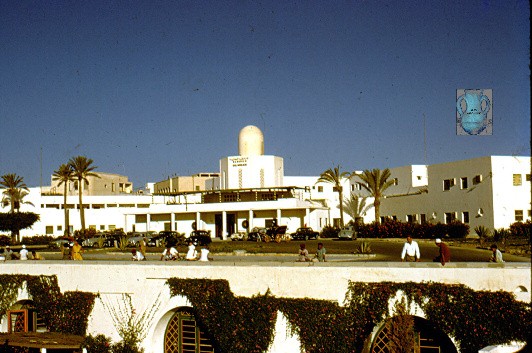
|

|
| Hotel Mehari |
Hotel Casino Uaddan |
I enjoy photography and have used some of the
photographs from my archives as illustrations for Victoria Giraud’s
recollections. They will bring back memories to all of you. Here they are:
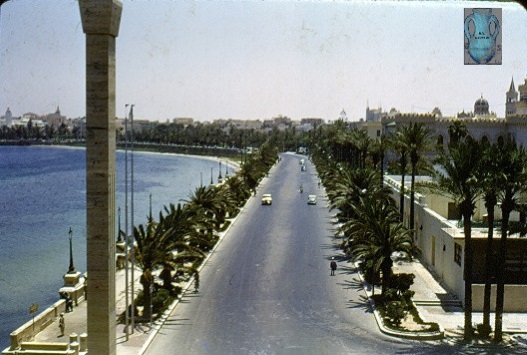 |
 |
| The
Promenade built in 1922-1924 by the architect Armando Brassini |
Fishermen
mending their nets in the port |
 |
 |
Fishermen
mending their nets
|
Tripoli
Harbour and small fishing boats
|
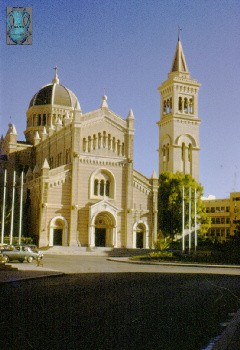 |
| The Sacred Heart
Cathedral |
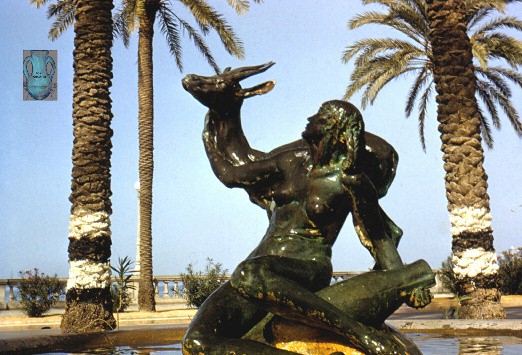
|
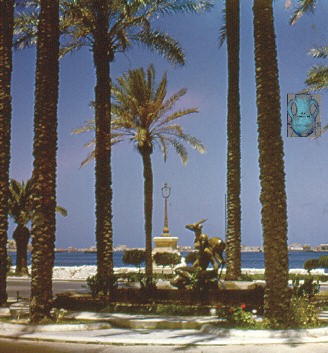 |
The
Gazelle Fountain 01
|
The
Gazelle Fountain 01 |
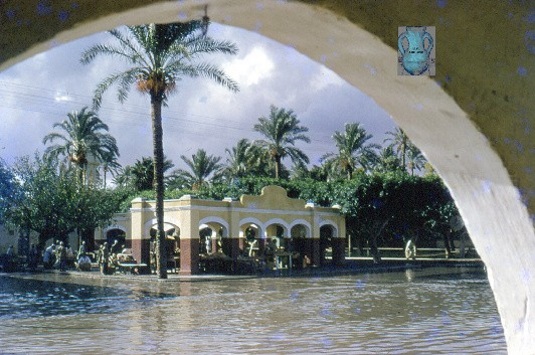 |
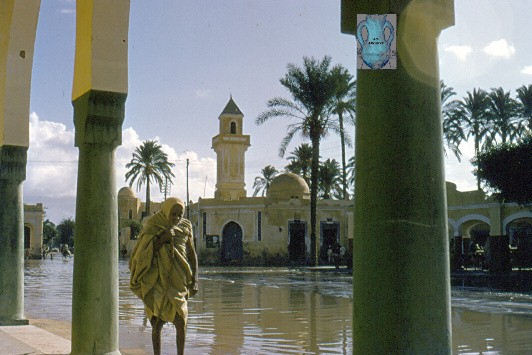 |
Suk
el Giuma in the floods 01
|
Suk
el Giuma in the floods 01 |
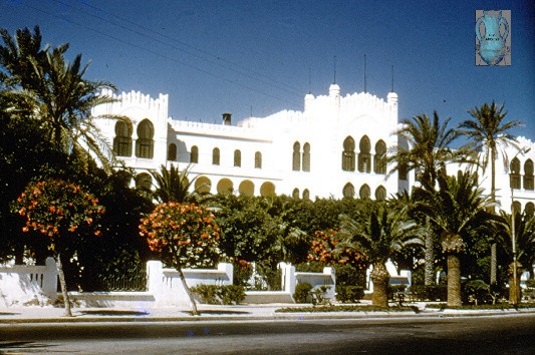
|
The Grand Hotel. The
first mega hotel constructed in Tripoli in 1928. Designed by an
architect, Alessandro Limongelli. It was demolished in 1982 to make way
for a new hotel, the Al Kebir Hotel
|
I remember when Richard Nixon , the 36th Vice
President to the United States, accompanied by his wife Pat Nixon, paid
a
visit to Tripoli.
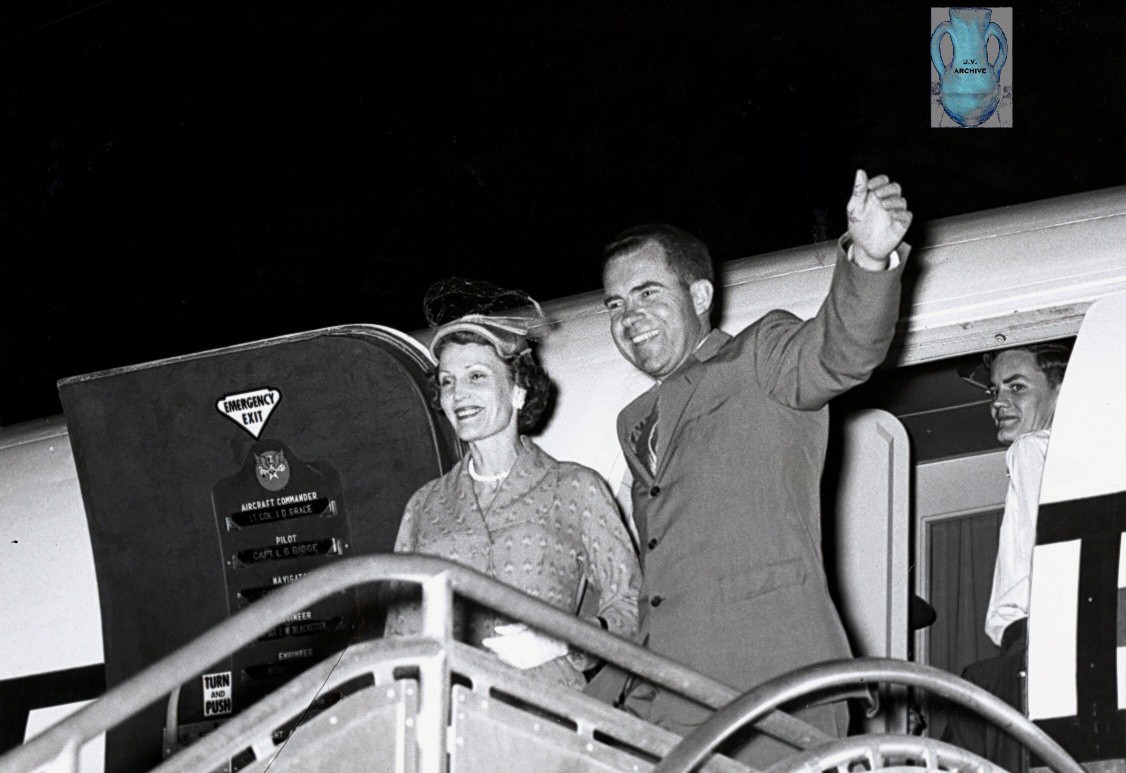
|
| Pat Nixon and Vice
President of the United States, Richard Nixon |
There was a great turnout of the community for this
exceptional visit. It was in March 1957 and these illustrious guests were welcomed to the Ambassador’s Residence
by the Ambassador John L.Tappin
If I remember rightly, a part of the US delegation
stayed in the Grand Hotel and the Grand Hotel was the venue for the
reception in
which all the maximum authorities of the Libyan Government , the
Ambassadors
from various countries and other VIPs attended.

|
| Their arrival at the
Grand
Hotel |
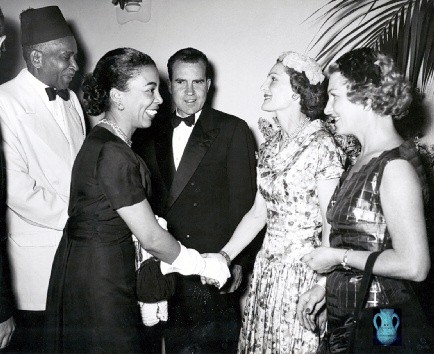
|
 |
At
one of the funcions
|
Another
official funcions
|
During this visit there were
bilateral meetings to discuss the development of new relationships and
the
promotion of economical and technical co-operation between the two
countries.
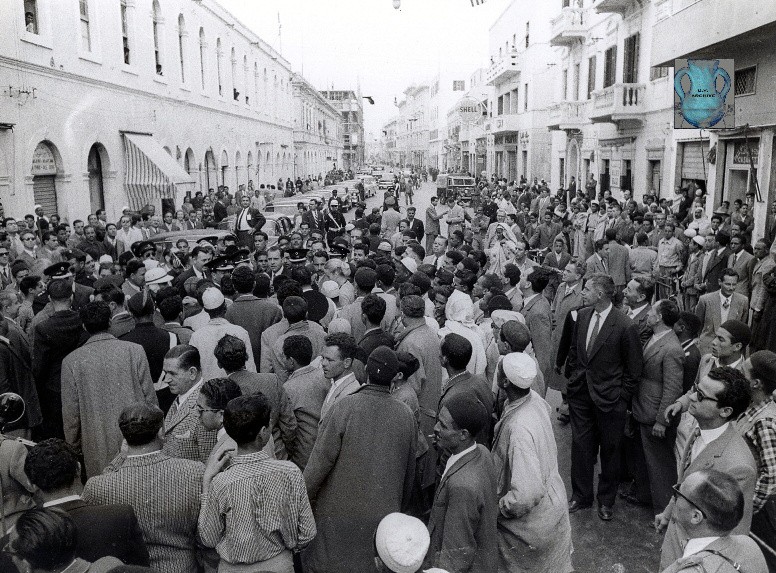 |
 |
Continuing the Sciara 24 December visit -
01
|
Continuing
the Sciara 24 December visit - 02 |
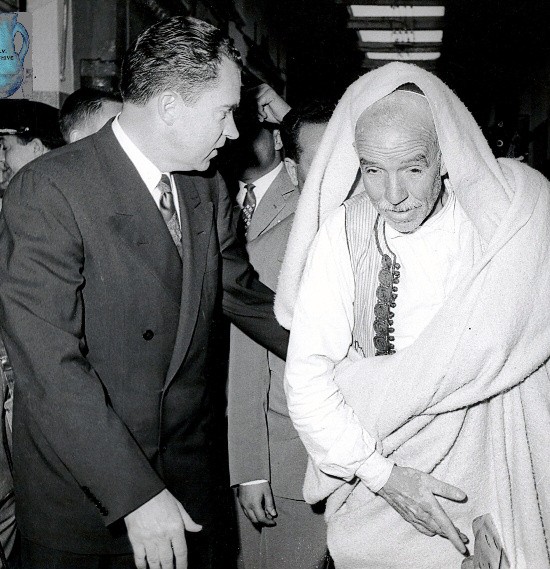 |
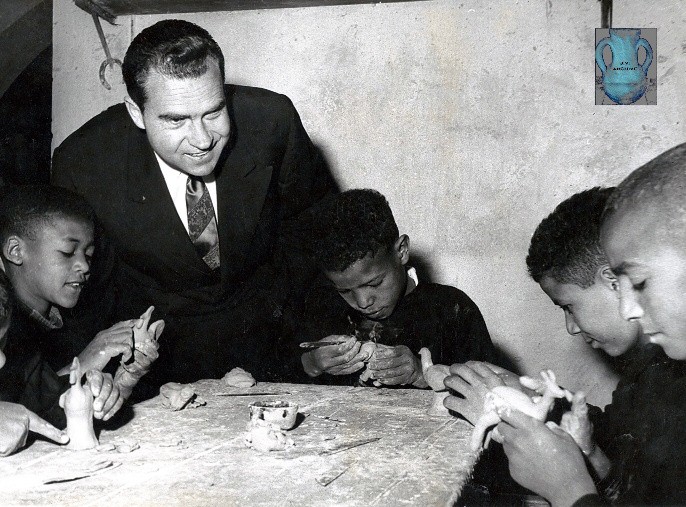 |
Visiting the Sul
el Turk
|
Visiting the Technical
School
|
The cast of the 1957 film, ‘The Legend of the Lost’
(‘Timbuktu’ in Italian) starring Sofia Loren, John Wayne and Rossano
Brazzi were
also guests of the Grand Hotel during the shooting of the film.

|
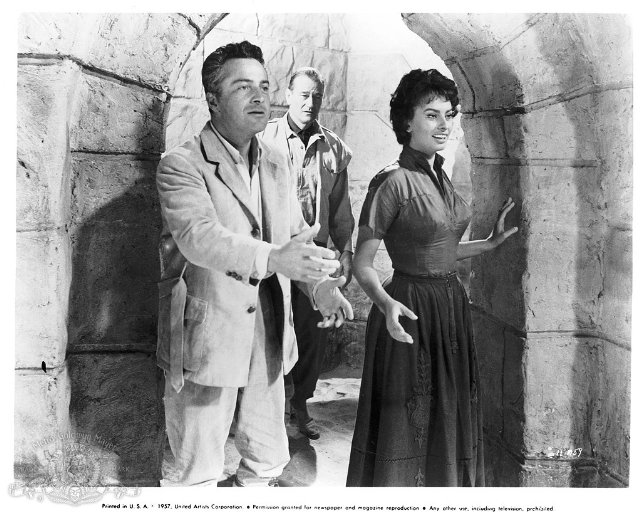 |
| Legend
of the lost - film |
Rossano
Brazzi, John Wayne and Sophia Loren |
Once the
shooting finished our journalist friend
Gianni Massa, editor of ‘The Corriere di Tripoli’, the daily newspaper
of
Tripolitania, obtained an interview with Rossano Brazzi. The interview
took
place in the foyer of the Grand Hotel and present were also colleagues
,
Stefano Licata, Franco Cosentino and Vittorio Halfon.
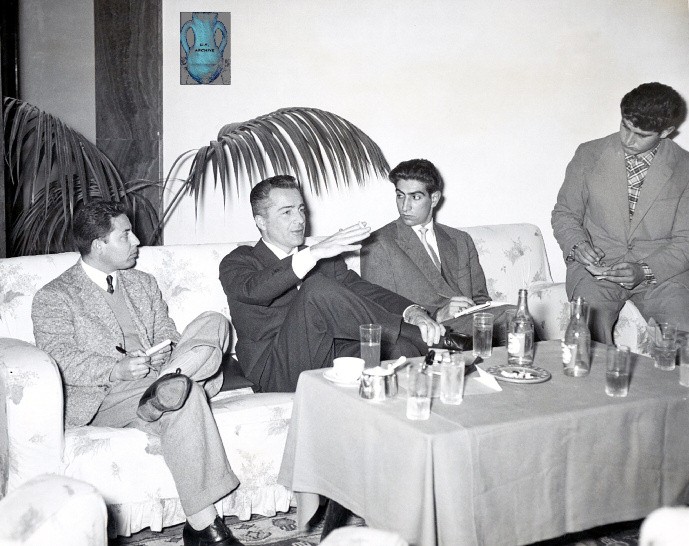
|
| Rossano Brazzi's interview |
I
am sure you all remember the cannon on the walls of the Red Castle and
its place in American history. The story relates that the first war
fought by the USA outside of American
Territory was in the First Barbary War which broke out on the 10th
May 1801. The USA and their ally Sweden, hoped in this way to protect
their
mercantile vessels from being captured by the pirates who were the last remnants of the Ottoman Empire and their
leader Yusuf Karamanli, Pascià of
Tripolitania.
In the October of 1803 the USS Philadelphia ran
aground whilst patrolling the coast. The Corsairs from Tripoli wasted
no time
in boarding the vessel and engaging in a violent gun battle with the
crew. They
managed to take possession of the ship despite various attempts by the
crew to
scuttle her before she could fall into enemy hands. About 300 crew
members were
taken prisoner along with their Captain, William Bainbridge and were
later held
to ransom. The Philadelphia was brought back to Tripoli where she was
anchored
off the entrance to the harbour with the aim of using her as a coastal
battery
against possible attempts by the Americans to gain entry to the port. However, on the night of the 16th
February 1804 volunteers
from the 1st Regiment of
Marines on board a small vessel , the USS Intrepid, under the command
of
Captain Stephen Decatur Jr. managed to retake the USS Philadelphia and
scuttle
her thus leaving Tripoli without defences. The USS Intrepid was a small
vessel
that had previously been taken under corsair command. Retaken she was
returned
to service with the US Navy. She was the vessel of choice when, on the 4th
September , under the command of Captain Richard Somers she attempted
to enter
harbour. Somers planned to blow her up in harbour in
an effort to scuttle the entire fleet of
the Pascià Yusuf Karamanli at anchor there. The ship was hit by the cannon from the
castle
defences before it could reach harbour and in the explosion that
followed
Captain Richard Somers and his five crew members were killed. They are
laid to
rest in the Hammagi Cemetery in Tripoli
in the section reserved for the Greek Orthodox and Protestant communities. Their
names have gone down in history.
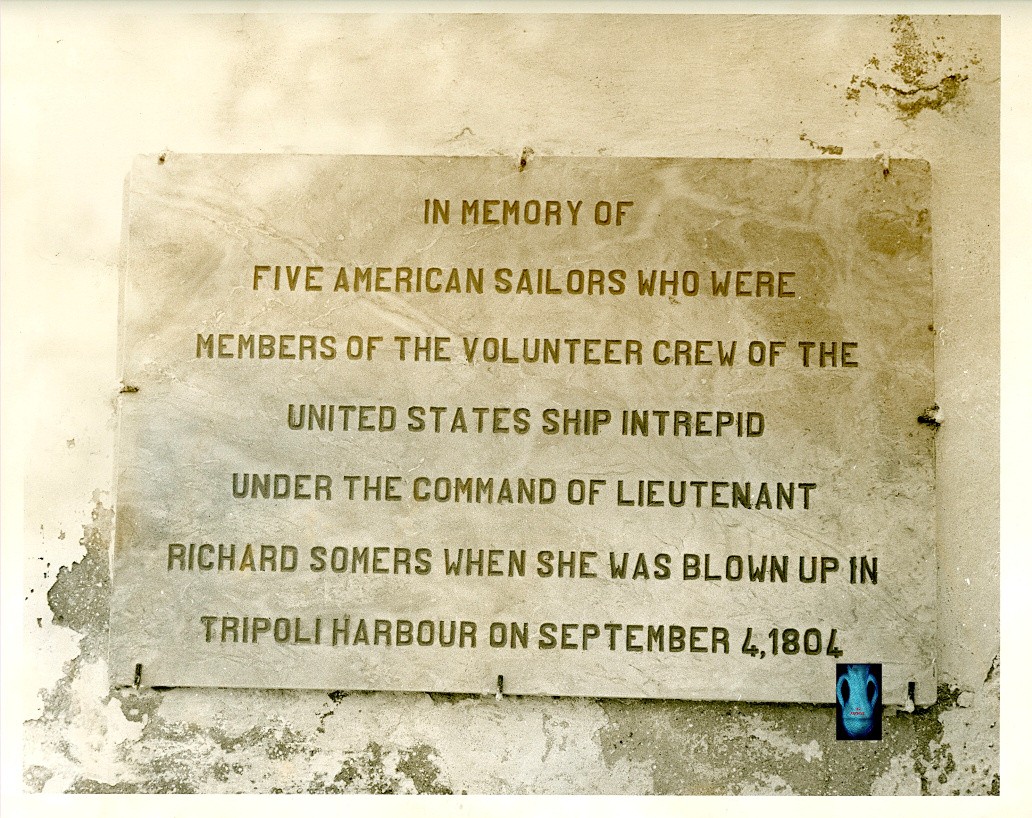 |
 |
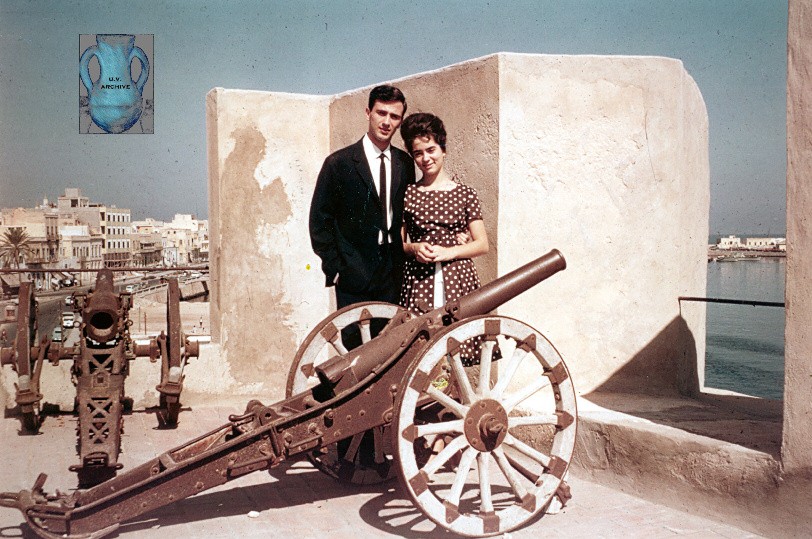
|
Plaque in memory of the
American crew of Intrepid volunteers Marines sunk in the Harbour of
Tripoli on 4 September 1804
|
The mounds of Marines
and of the
Captain R.
Somers |
Umberto Vaccarini and
his wife, Angela,on the ramparts of the Castle, next to the cannon
which (they say) sank the Intrepid |
Games were important for us growing up in Tripoli in
those years. It was well known that the American school Basket team
from the
airbase were a formidable team. However , as often happens when facing
a strong
team , the other team, fuelled by adrenaline, is galvanized into super
human
efforts. The final points scored meant a disconsolate return to the air
base by
our American friends. Our team was the envy of all the other school
teams in
the community and it was not easy to beat a quintet formed by Dino
Mercantanti,
Piero Pieroni, Augusto Belpassi, Alberto Mallia, Franco Taliana backed
up by
Bruno Cosentino, Domenico Romeo, Bito and Italo Nemni, Orestes Sagona,
Alberto
Candelaria, Antonio Marcello, Giorgio Devruscian, Harold Tartaglini,
Giancarlo
Eminian, Franco Venza, Antonio and Sebastian Palmer. All great players
who represented
the best in the Italian schools.
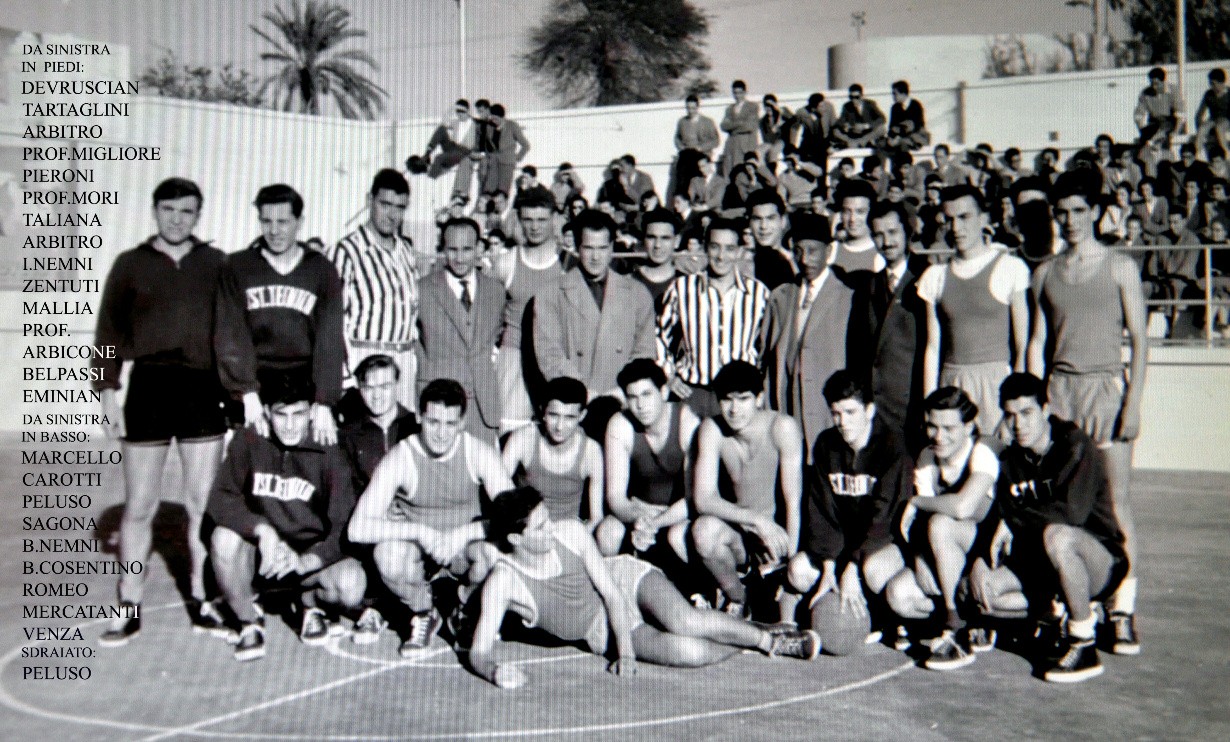
|
| The
Italian School team of basketball |
Finally I would like to spend a few words on the “Big
Texas Rodeo” held in Tripoli in 1957.
The program announced
“ The 17th United States Air Force and
Wheelus Air base
In co-operation
With the Government of Tripolitania
Presents
Thrills of the Wild West
Busetta Race Track
Tripoli, Libya
30th Nov-1st Dec”

|
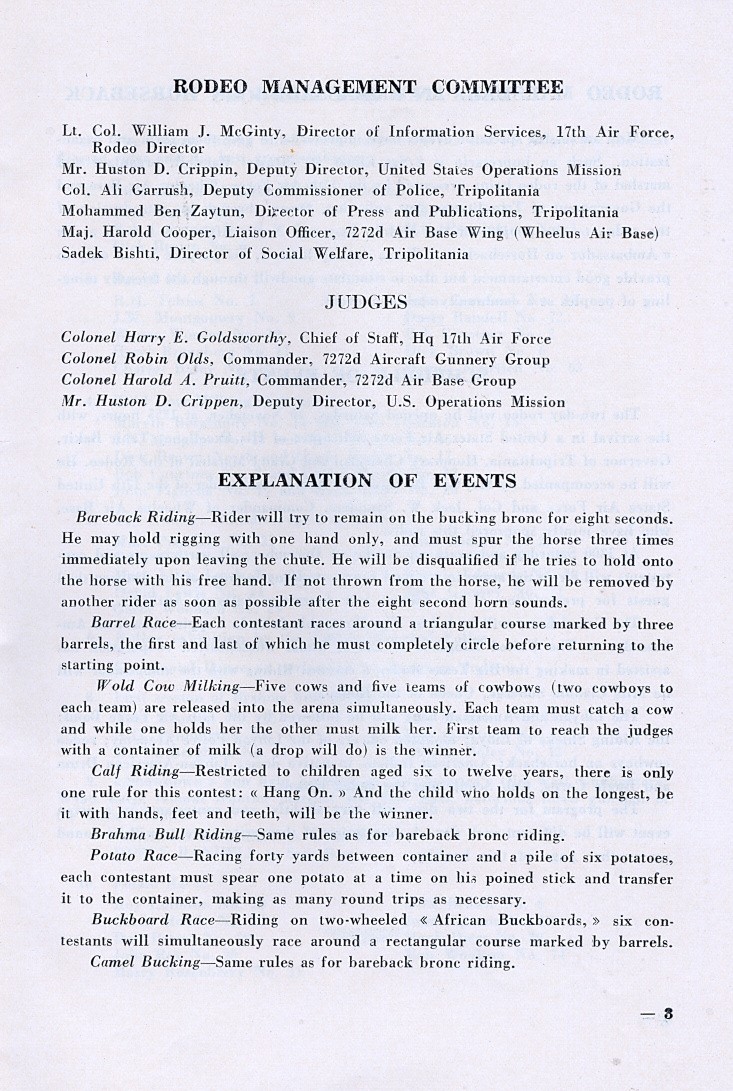 |

|
| Program |
Organizing Committee -
Information lines |
Eco printing |
I was there. I had never seen anything like it nd it
was an unforgettable experience.
Some of the photographs reproduced here are from my
personal archives and are testimony of a wonderful event.
Dear friends, for me this has been a stroll down
memory lane and in
sharing these memories with you all hope to have contributed to an
appreciation
of Victoria Giraud’s “ An American Girl
in Tripoli”. I have done so with great pleasure because they are our
memories
and memories are also emotions. Assalam Aleikum

| 
|
Victoria Graud
|
Unberto Vaccarini
|
See Victoria Giraud's blog on line
Victoria Giraud is also on facebook
